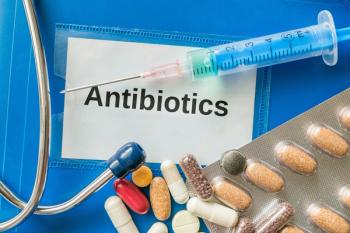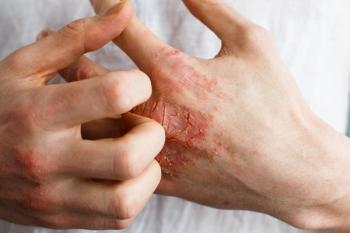
Texas Health Department Investigating Measles Outbreak as Case Count Reaches 90
Measles is highly contagious, and the Texas Department of State Health Services said that additional cases are likely to occur in Gaines County, which had 57 cases as of February 21, 2025.
The Texas Department of State Health Services (DSHS) reported an outbreak of measles in the South Plains region of Texas, with 90 reported cases as of February 21, 2025. Of the cases, 16 patients were hospitalized, and only 5 cases had known vaccinations.1
Measles is highly contagious, and DSHS said that additional cases are likely to occur in Gaines County, which had 57 cases as of February 21, 2025. Additionally, Lubbock has 1 case, Lynn has 1 case, Terry has 20 cases, and Yoakum has 4 cases.
Fifteen cases occurred in patients aged 0 to 4 years, 33 for those aged 5 to 17 years, 6 for those 19 years and older, and 4 with pending status. The first reported cases of measles were reported in January 2025, which were the first confirmed cases of measles in Texas since 2023.1,2
DSHS stated that getting vaccinated against measles is the best way to prevent getting an infection, as the measles-mumps-rubella (MMR) vaccine is highly effective at preventing measles. Measles is transmitted by direct contact with infectious droplets and can be airborne, remaining infectious for up to 2 hours. Symptom onset occurs a week or two after contact, including high fever, cough, runny nose, and red, watery eyes. After the initial symptoms, a rash of flat, red spots breaks out and spreads down the neck and trunk to the rest of the body.1,2
The CDC recommends that children should get 2 doses of the MMR vaccine, starting with the first dose at 12 to 15 months and the second dose at 4 to 6 years. It is also recommended that teens and adults be up to date on the MMR vaccination. The CDC reports that 1 dose of the MMR vaccine is 93% effective against measles, 78% against mumps, and 97% against rubella, with 2 doses increasing the effectiveness to 97% against measles and 88% against mumps.
It is possible to contract measles, mumps, or rubella after getting 2 doses of the vaccine, but the symptoms are generally milder. Approximately 3 out of 100 patients who get 2 doses will get measles if exposed to the virus but will also be less likely to spread the diseases, according to the CDC.3
Measles is considered one of the most contagious diseases, according to the World Health Organization. In 1954, a measles outbreak in Boston, Massachusetts, led to the first successful cultivation of the virus, helping physicians create the first vaccine against measles. The vaccine is used as the basis for most live-attenuated vaccines to this day. The widespread use of vaccination against measles in childhood reduced disease rates worldwide.4
Pharmacists are essential in vaccination against many contagious diseases, including measles, according to authors of a study published in Pharmacy. In the study, investigators noted that community chain pharmacists administered the MMR vaccines to 62526 patients between January 1 and June 30, 2019, accounting for a year-over-year increase of 231.9% associated with increased patient demand in response to a measles outbreak. In May 2019, investigators reported the largest increase of 648.3%, with 24671 patients vaccinated.5
However, not all states allowed unlimited privilege for pharmacists to administer vaccines. The authors reported that the average number of MMR vaccines administered in a pharmacy for a state that required a vaccine prescription was 1.45 per store compared with states that did not require prescriptions, averaging 8.53 per store.
The investigators estimated that if pharmacists were fully allowed to administer the vaccine in the 8 states with reduced or no vaccine privilege, the community chain pharmacists would have administered an additional 12404 to 36551 vaccinations.5
As of February 6, 2025, there were a total of 14 measles cases reported between Alaska, Georgia, New York City, Rhode Island, and Texas, according to the CDC.6
REFERENCES
1. Measles Outbreak–Feb. 18, 2024. News release. The Texas Department of State Health Services. February 18, 2025. Accessed February 21, 2025. https://www.dshs.texas.gov/news-alerts/measles-outbreak-feb-18-2025
2. Confirmed Cases of Measles – January 2025. The Texas Department of State Health Services. January 23, 2025. Accessed February 21, 2025. https://www.dshs.texas.gov/news-alerts/confirmed-case-measles-january-2025
3. CDC. Measles, Mumps, and Rubella (MMR) Vaccination: What Everyone Should Know. Updated January 26, 2021. Accessed February 21, 2025. https://www.cdc.gov/vaccines/vpd/mmr/public/index.html
4. World Health Organization. History of Measles Vaccine. Accessed February 21, 2025. https://www.who.int/news-room/spotlight/history-of-vaccination/history-of-measles-vaccination
5. Singh T, Smith-Ray RL, Taitel M. The Impact of Pharmacist Vaccination Privilege during a Nation-Wide Measles Outbreak. Pharmacy (Basel). 2020;8(1):7. Published 2020 Jan 9. doi:10.3390/pharmacy8010007
6. CDC. Measles Cases and Outbreaks. Updated February 7, 2025. Accessed February 21, 2025. https://www.cdc.gov/measles/data-research/?CDC_AAref_Val=https://www.cdc.gov/measles/cases-outbreaks.html
Newsletter
Pharmacy practice is always changing. Stay ahead of the curve with the Drug Topics newsletter and get the latest drug information, industry trends, and patient care tips.





























































































































